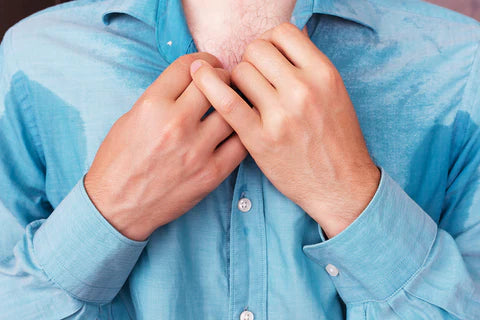
Understand your Type of Hyperhidrosis: Primary Focal or Secondary Generalised?
Hyperhidrosis is a condition characterised by excessive sweating. It can be a very debilitating condition and can have a significant impact on a person's quality of life. There are two main types of hyperhidrosis: primary focal and secondary generalised hyperhidrosis.
Primary Focal Hyperhidrosis
Primary focal hyperhidrosis is the most common type of hyperhidrosis. It is not caused by any underlying medical condition and is thought to be due to a genetic mutation. Primary focal hyperhidrosis typically affects the palms of the hands, the soles of the feet, and the armpits. It can also affect the face, scalp, and groin.
Secondary Generalised Hyperhidrosis
Secondary generalised hyperhidrosis is less common than primary focal hyperhidrosis. It is caused by an underlying medical condition, such as an endocrine disorder, a neurological disorder, or a medication side effect. Secondary generalised Hyperhidrosis can affect the entire body, or it may be limited to certain areas.
How can you tell the difference between Primary Focal Hyperhidrosis and Secondary Generalised Hyperhidrosis?
There are a few key differences between primary focal hyperhidrosis and secondary generalised hyperhidrosis. These differences include:
- Age of onset: Primary focal hyperhidrosis typically starts in childhood or adolescence. Secondary generalised hyperhidrosis, on the other hand, typically starts in adulthood.
- Pattern of sweating: Primary focal hyperhidrosis generally affects specific areas of the body, such as the palms of the hands, the soles of the feet, and the armpits whereas secondary generalised hyperhidrosis can affect the entire body.
- Associated symptoms: Primary focal hyperhidrosis is not usually associated with any other symptoms. Secondary generalised hyperhidrosis, on the other hand, may be associated with symptoms of the underlying medical condition that is causing it.
If you think you may be suffering from hyperhidrosis, it is important to see a doctor to get a diagnosis. The doctor will ask you about your symptoms and medical history and may perform a physical exam. If the doctor suspects that you have hyperhidrosis, they may order some tests to rule out other possible causes of your symptoms.
Treatment for Hyperhidrosis
There are several treatment options available for hyperhidrosis. These options include:
-
DRITAL Perspiration Controlling Powder – DRITAL works by inhibiting the activity of sweat glands, which are responsible for producing sweat. By blocking the transmission of signals from nerves to sweat glands, it reduces the stimulation of these glands, resulting in decreased perspiration.
- Antiperspirants: Over-the-counter or prescription-strength antiperspirants containing aluminium chloride can effectively reduce sweating by temporarily blocking the sweat ducts.
- Medications: In cases of severe hyperhidrosis, prescription medications such as anticholinergics may be recommended by your doctor to reduce sweating by blocking certain nerve signals.
- Botox Injections: Botox injections can be administered in the affected areas to inhibit the release of acetylcholine, a neurotransmitter responsible for stimulating sweat glands. The effects of Botox injections typically last for several months.
- Surgical Interventions: In severe cases of hyperhidrosis that do not respond to other treatments, surgical options such as sweat gland removal or sympathectomy (cutting or clamping of specific nerves) may be considered. These procedures are typically reserved for extreme cases and require careful consideration with a medical professional.
It is important to note, the type of treatment that is right for you will depend on the severity of your hyperhidrosis and your individual preferences.
References:
Hyperhidrosis: types, causes, symptoms & treatment: https://my.clevelandclinic.org/health/diseases/17113-hyperhidrosis
Primary and secondary hyperhidrosis causes: https://www.verywellhealth.com/hyperhidrosis-causes-4777757
